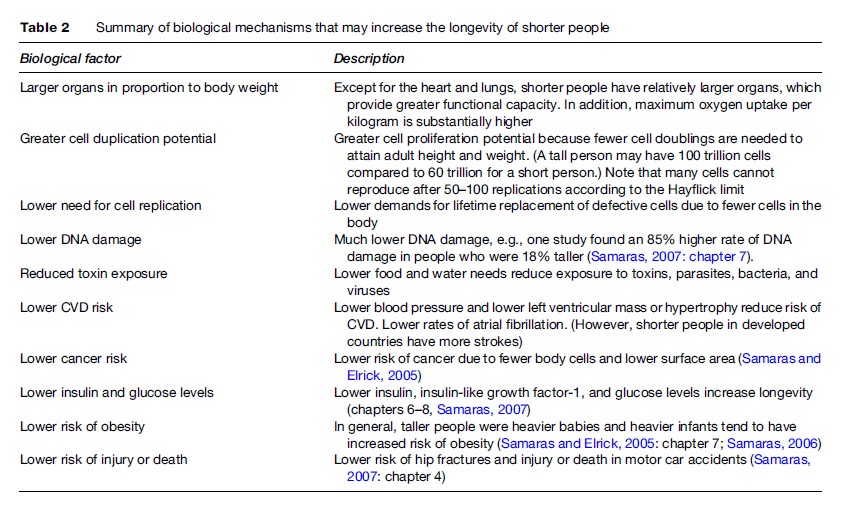If tallness is a real advantage for promoting longevity, what are the mechanisms that promote this feature? Certainly, recent human history shows a relation between improved education and economic status and increased height. However, this condition is environmentally driven rather than related to biological factors, although biological factors favoring taller height include lower heart and resting metabolic rates. Another beneficial factor is avoiding low birth weight (<2500 g). Since taller people are less likely to have been low-birth-weight infants, this reflects better maternal nutrition and SES as long as birth weight does not exceed 4000 g (macrosomic). In contrast to taller people, shorter people have a larger number of biological advantages if their proportions and life-long SES are the same as taller people (see Table 2).

Conclusion
The preceding findings indicate that when tall people remain thin and experience the benefits of high SES, they can attain improved longevity compared to shorter people in disadvantaged populations. However, it appears that shorter, lighter bodies within the framework of positive environments and good nutrition have a number of inherent biological advantages.
Since height has a moderate impact on longevity, short and tall people can benefit from following well-established health practices. These include (1) maintenance of low BMIs (19–23), (2) consumption of diets high in vegetables, whole grains, and fruits and low in saturated fat, trans fats, and salt, (3) regular exercise, (4) adequate sleep, (5) avoiding exposure to harmful bacteria, viruses, and toxins, (6) management of stress, (7) maintenance of social networks, and (8) total avoidance of smoking and limited use of alcohol (Samaras, 2006, 2007).
Bibliography:
- Central Intelligence Agency (2007) World Factbook. http://www.cia. gov/library/publications/the-world-factbook (accessed October 2007).